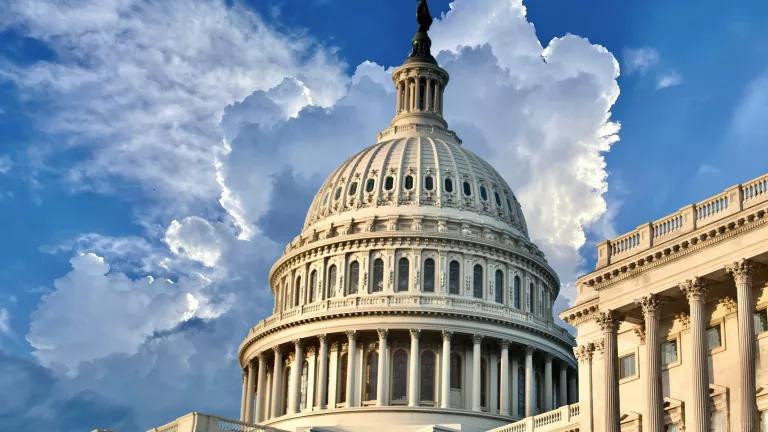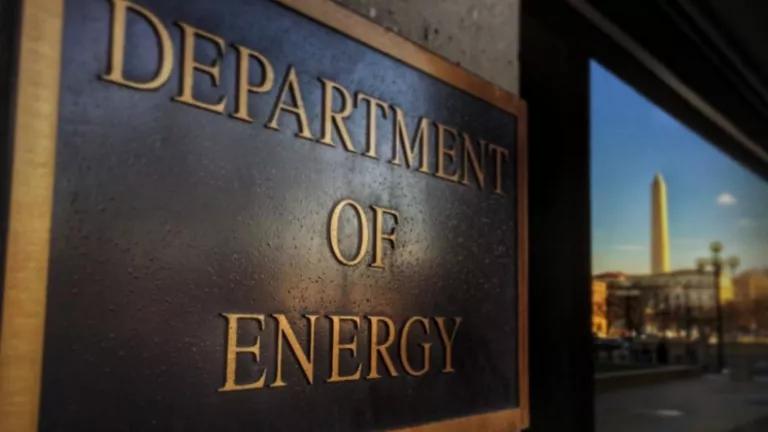What an honor to attend oral arguments at the Supreme Court of the United States today. The building's stately presence and history provided quite the backdrop for arguments on an issue dear to me and many other energy geeks across this country - the authority of the Federal Energy Regulatory Commission (FERC) to regulate, via Order 745, demand response resources' participation in wholesale energy markets. Only time will tell where the justices will land, but there were some important takeaways from today's arguments, which may have major implications for clean energy and consumers' wallets.
The case, known as FERC vs. Electric Power Supply Association, centers around whether FERC can design rules and incentives that allow consumers to get paid for demand response (demand response is reducing energy use during high demand periods). The high court is reviewing a U.S. Court of Appeals for the D.C. Circuit decision agreeing with the power plant operators that the states - not FERC - have exclusive jurisdiction over demand response and that FERC lacked the authority to issue Order 745.
I garnered four important takeaways (mostly variations on a theme):
First, the Federal Power Act is clear that FERC has jurisdiction to regulate demand response as a practice affecting wholesale electricity rates - its participation in wholesale markets directly lowers costs. (In fact, Order 745 only allows demand response to participate when the savings from doing so are greater than the cost of its participation.) The act is also clear that these practices must be just and reasonable. Finally, as the U.S. Solicitor General explained today, the act does not otherwise foreclose FERC's authority in this area. The solicitor therefore convincingly noted that this statutory reality should be the end of the discussion on whether FERC can act as it did. With clear statutory authority, standard legal deference to FERC's technical expertise should set in.
Second (and a natural outgrowth of my first point), Justice Elena Kagan importantly pointed out that if FERC can't regulate demand response participation in wholesale markets and states can't regulate demand response participation in wholesale markets, we have a problem. It's Regulatory Gap 2.0 (the first being in 1935 when Congress passed the Federal Power Act to address the reality that power flow ignores state lines and can't regulate actors and actions in other states). Nothing in the Federal Power Act precludes Wal-Mart or any other retail customer from participating in wholesale markets. As we see it, the existing cooperative federalism that exists pursuant to the Federal Power Act works so let's not muck it up.
Third, Justice Kennedy's concern over the "circular" nature of FERC's position - that FERC is essentially first defining the wholesale market by allowing demand response to participate, and then deeming that participation a practice affecting rates - is, in my humble opinion, a red herring. FERC did not invent demand response participation in wholesale markets. Those resources were already participating in the wholesale markets so FERC necessarily had to choose whether and how to govern that practice. FERC is acting as the Federal Power Act envisions it will. Importantly, FERC's authority is not unbounded and is subject to a directness analysis on the practices front and its obligation to ensure just and reasonable rates.
Fourth and finally, there is a reality that the law doesn't imitate life here, as evidenced by the flow of questions and comments during the arguments. The technical nature of wholesale market design and its interaction with the reality of power flow, not to mention the myriad of players and their incentives and interactions in the markets, are difficult to break down in an hour-long argument. The relatively straightforward Federal Power Act has continued to work because it embraces concurrent jurisdiction, provides clear guidance and leaves the technical design questions to the technical expert - FERC. There is no reason to change course now.
I left the majestic court building today convinced that FERC's issuance of Order 745 is well within its jurisdictional wheelhouse. For the sake of our pocketbooks and our planet, here's hoping the justices agree.



